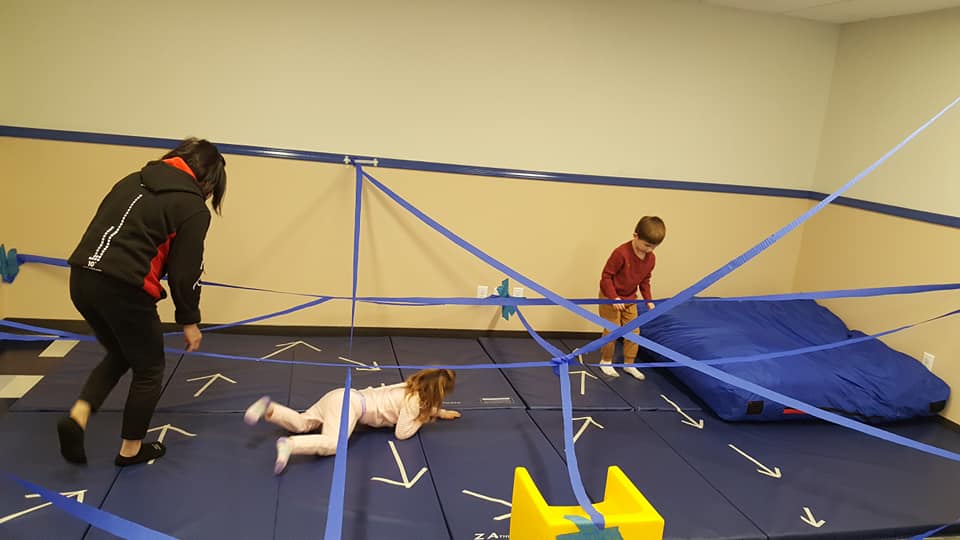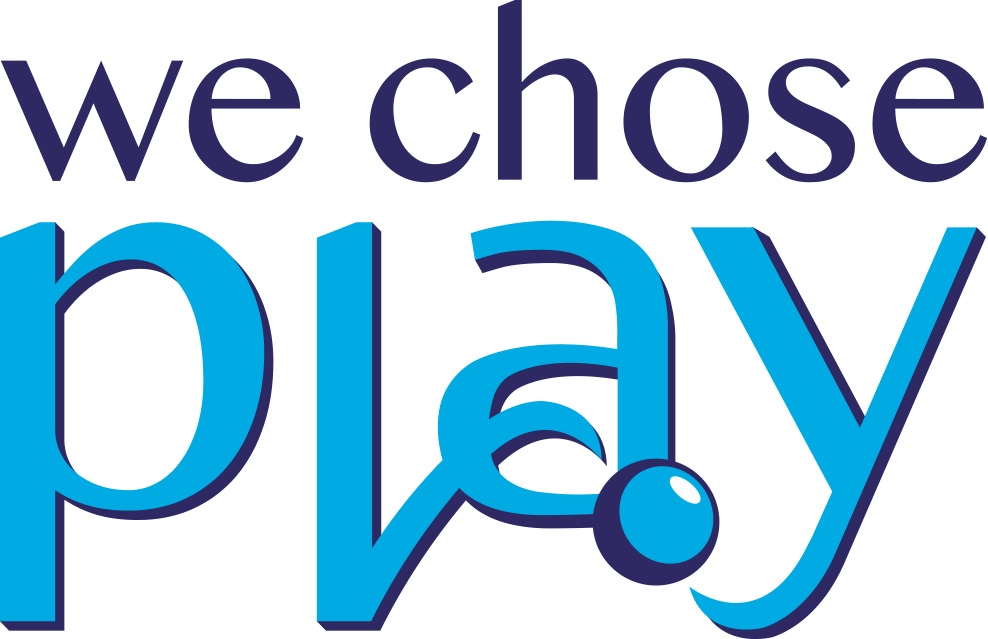This week we have a new guest from Fresno, California. Kristy Gose is an Infant Family Mental Health Specialist, a Developmental, Individual differences, Relationship-based (DIR) Expert Facilitator and trainer, and a professor at Fresno City College where she co-ordinates the Early Intervention Certificate Program. She also owns and operates the Touchstone Family Development Center in Fresno, which is a DIR centre. We discuss how to do Floortime with groups–including with siblings and neurotypical children.
I’ve had questions emailed to me and questions in the ICDL Parent Support group where parents ask how to do Floortime with their autistic child and his/her siblings or with a few kids visiting for playdates. Kristy’s Center provides direct service and faces this question frequently–not only with clients, but also with teachers. How do we support interaction with our neurodivergent children in groups?
Floortime with Family and Small Groups
The Sensory Processing Profile
Kristy says that fundamental to the DIR model is understanding everyone’s sensory processing profile, including the neurotypical children, parents, and teachers in the group. The facilitator can juggle the sensory profiles together to promote interactions.
I told Kristy that similarly, Dr. Shanker also brought up working with the stress and regulation process of teachers in his self-reg workshops before trying to have them understand the profiles of the children they teach.

Photo Copyright Touchstone Family Development Center
Kristy says it starts with a discussion, which is a reflective process. They remind each other of their own sensory profiles and start the group session with something that supports their own profiles. If noise and talking is dysregulating to someone, for instance, then they’ll insert movement breaks, some silent activities, or some mirroring. Pause and Play is a technique where they use an old TV remote control and when someone presses the pause button, everyone pauses and regulates: re-organizing their bodies, re-setting their visual-spatial environment, etc.
In the moment where we have lost regulation, we have to stop the world.
But how do you pause and regulate in real life when it’s mass chaos?
Kristy says the answer is the same: look to yourself by looking to your own wants, needs, regulation to find the sense of calm. Understand your own stress response and give yourself a moment to self-regulate. Kristy suggests that clients to establish touch points or anchors such as holding up an item that means Mama needs to stop.
Some of the kids in the play groups will come up to Kristy and say “I need a pause“. She says that the children are really good at understanding what causes them stress in their bodies. They will search the environment for that emotional anchor to help them get regulated again at very young ages. We can support those signals. It’s the fourth capacity: use someone else’s idea for regulation for yourself.
It can be confusing for adults to hear that the fourth functional emotional developmental capacity is about some social problem when really it’s about the separation of self and others: That other people have different ideas and I can use them to my benefit and seek that support, or just use it to navigate my environment. It’s where we can really begin to use emotional signalling with others to regulate.
Look at the Environment
For children still working through the early capacities, Kristy monitors more closely, looking for the proactive signals by studying the environment and co-regulating. She loves Virginia Spielmann’s podcast about Sensory Lifestyle over a sensory diet where you design the environment to support a child’s individual profile.
So at Kristy’s Center, they look at the room and ask if there is room for movement breaks. Can they find what they need? She works with parents so much to organize toys into categories to support ideation. If the blocks are in a designated place, then we can use them for ideas. But if they’re all mixed together it’s harder to get ideas from that.
What about Siblings?
In families with multiple children, siblings can provide the most information about their neurodivergent sibling that mom and dad are sometimes not even aware of. A sibling will come up to Kristy and say “Oh, she won’t like that” or will bring a toy that the sibling really likes and will promote good regulation and interaction.
Kristy will ask, “How is bathtime? How is it at suppertime? Can you go out with your brother or sister?” The siblings give Kristy so many valuable clues to their sibling’s regulation. Kristy will also align with the sibling in order to support regulation and engage. So Kristy will support regulation and the sibling will engage. The sibling will often have an idea that everyone can join in on. Meanwhile Kristy can work on pacing, suggest repeating a question again, etc.
The Parent as the Mediator
The parent as a mediator requires practice and some coaching. It also requires the parent understands his/her own regulation process and their own sensory profile. If you are a parent, where do you play the best? Outside, in the pool, in a tent? Know that about yourself and draw the children to you.
Co-regulation can be misunderstood. We follow the child’s lead in Floortime by following their desires and motivations, but that’s only one part of co-regulation. We not only enter their world, but we encourage them to come into our world so we can have ideas too. That’s joy. That’s where we get the gleam in the child’s eye.
For example, I’m on edge being outside in our backyard because I don’t like bugs and am scared of animals coming in to the yard, plus I’m worried about my child throwing toys over the fence into the ravine or into the pool. I also don’t like getting dirty. My husband is the opposite.
Kristy says our children need both: what’s great for dad and what’s great for mom. We get stuck in what’s great for our child and disregard where we are most comfortable.
In the secure trusting joyful Relationship, the child doesn’t really care where they are playing when you are there and are their emotional anchor. They will enter that co-regulation.
The bottom line is that our children do have to go places with family and there are strategies available for such outings, but central to all of it is the Relationship.
What we can do is prep our children for their own stress responses by telling them what we’re going to do, that it will be really hard, and that we will be right there with them. Then just plan to go as long as you can do it.
Just doing that alone frees parents of their own expectations. Erase all expectations and just tune in to what will be regulating for your own family or group.
When going out as a family we need to take into account all of our preferences. Kristy says we can regulate each other by reminding the spouse, “It’s ok. I’m here. I got this.” so they can self-regulate and return to the family group. You can do the same at home for your spouse as well.
Bringing it into consciousness makes it intentional, Kristy says. If we make it intentional, we’re less likely to be triggered. When we prep each other and put into words what our expectations can be and will be, it brings the triggers from our midbrain into our prefrontal cortex so we can navigate them and make decisions about our stressors and stress responses.
Putting them into speech and language is really important. This is reflective practice, Kristy says. What are the tools I’m going to need to go into this situation? Who are my emotional touchstones/anchors? Who are my regulators? Let’s all be committed to one another? It makes a huge difference.
Helpful Tips
Before starting a session, Kristy gets a piece of paper and jots down what the group wants to do after asking them. She includes moms, dads, and siblings. First they’ll organize their bodies, then they’ll do an obstacle course. She also asks what has been really been bothering them this week? Siblings will often offer helpful information such as, “Bobby threw all the bubbles out of the bath last night!“
She jots some things down and when they see her jotting it down, it seems to regulate the group. If their ideas or thoughts get disorganized, they can go back to the list and change it or add an item. At the end of the session, they’ll look back and say, “Oh look, we didn’t even do what’s on our list, we came up with more ideas!“
If the group gets a bit dysregulated, Kristy can say, “I think we need to change our list a little bit. It looks like we have some new ideas” which brings them back to the group and the co-regulation can begin.
Playdates
I asked Kristy about a question a parent had for me in the Online Parent Support Drop In. The child went on and on about ballet and the other child said, “I’m bored. I want to go home.” The mother suggested they dance first, and then they had so much fun that the child decided she didn’t want to go home.
Another parent gave the example of being at a birthday party where the autistic child might interrupt and answer questions without waiting for the social cue. The mother wants to say, “This is how my child is communicating with you” rather than saying “Shhh, wait for your turn“.
So how do we mediate as a parent? The parent can certainly say “She’s very interested in this idea!” at the birthday party or at home Mom can provide a cue, “Ok one more idea!” and suggest, “Ok let’s dance“. In a group we all have to do our part, so we want to validate the typically developing children so they will support the neurodivergent children. They are the best models for our neurodivergent children, but not the best supporters. They need the support in those settings.
Kristy will validate the neurotypical children by saying, “Oh it’s going on a little long isn’t it?” but then encourage their support by saying, “Let’s give her a few ideas“. Kristy likes working in groups with two neurotypical children with one neurodivergent child where she supports and mediates between the children.
Explaining or defending our children’s behaviour
To other children I gave Kristy the example of my son going to play places at McDonald’s restaurants and some of the issues that have come up. Sometimes it is awkward juggling what to say to other parents when you are on the one hand defending your child and on the other hand trying to educate the other parent about why your child is doing what they are doing.
Again, Kristy says she would validate neurotypical children for telling us about what our children have done that might not have been ideal by saying, “Oh, I bet that was rough and scary” and using affect to say “I know sometimes his excitement and happiness gets a bit overwhelming, huh?” to draw the child into your world.
Kristy says we can both defend our child and explain their behaviour and support the child who is having that experience. It’s really supporting the neurotypical child in the higher functional emotional developmental capacities (6, 7 and 8). It’s not black and white. There are gray areas. My child might be laughing and acting oddly. Other children may not have never seen this before. There’s more than one answer. We want to help the neurotypical child see that there might be a special need which is a different way of processing.
To other parents What about explaining your child’s behaviour to other parents who might judge us thinking our child is misbehaving?
Kristy says first, we can feel our own triggers and recognize that the other parents are being triggered at the same time. Seek co-regulation with the other parent at the same time. Acknowledge their perspective. “I know how difficult it must be to see my child holding your child down like that. I’m on it.” Then when you take care of it, come back and say, “I saw your stress when my son did that to your child and I felt it too.“
When we’re triggered it’s really hard because we might feel angry and think that the other parent shouldn’t feel that way because it’s our child that has the special need. But what will draw us together by acknowledging their experience. And sometimes others will be jerks and you can’t take that personally. If you try to co-regulate and they don’t respond, move on. It’s their stress response, not yours. Don’t take it personally. We can never know where another person’s stress response comes from: in their upbringing, with their families, or even in the last 10 minutes before they arrived.
Thank you to Kristy Gose for sharing her wealth of knowledge around running Floortime groups! If you appreciated this post, please consider sharing it on Facebook or Twitter. And if you have any related experience to share, comments or questions, please feel free to post them in the Comments section below.
Until next time… here’s to affecting autism through playful interactions!





I run Social Skills Groups and I have to pay attention to all of these points made in the article. It’s so nice to see that DIR can be used in group and in real time.